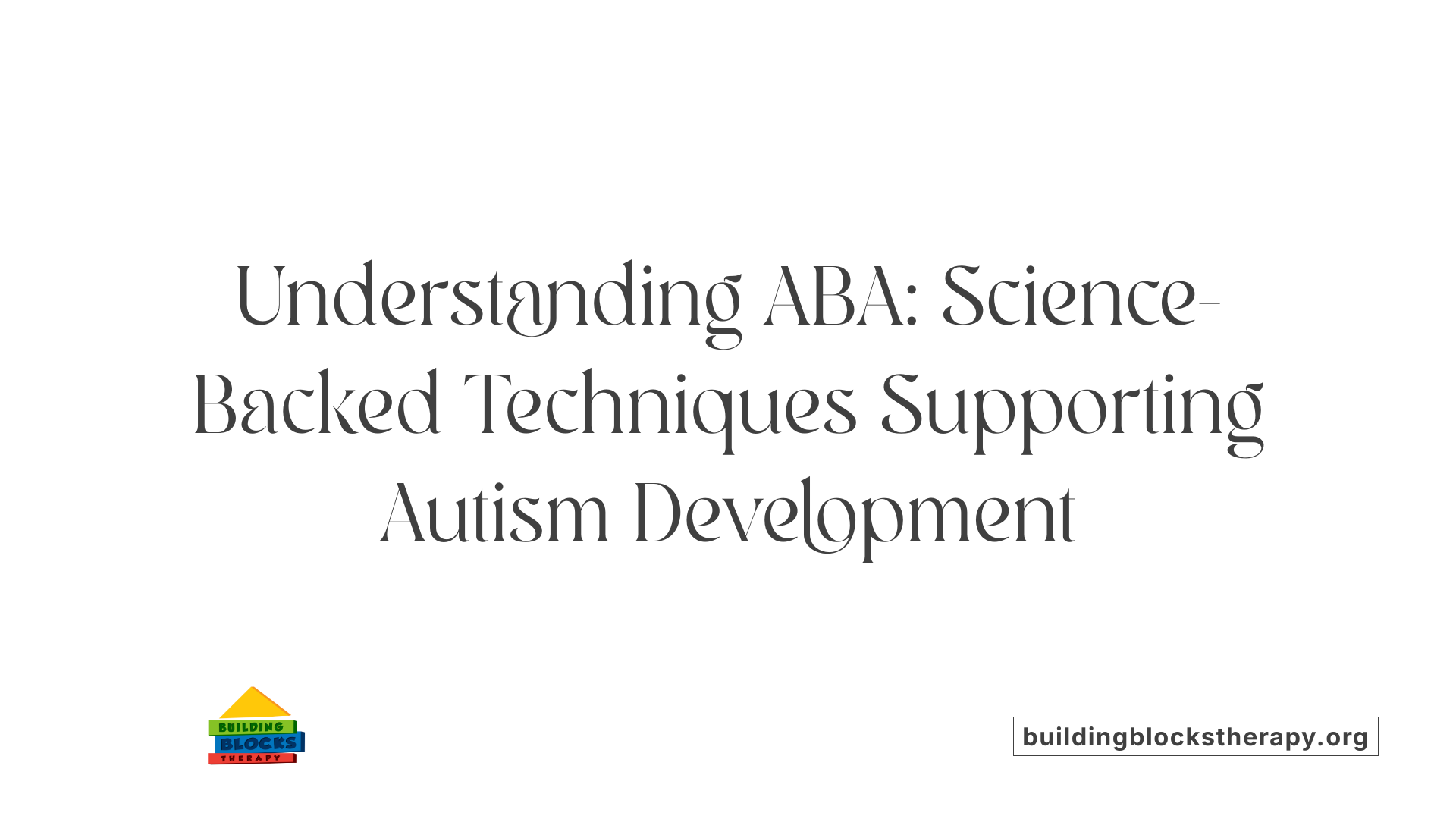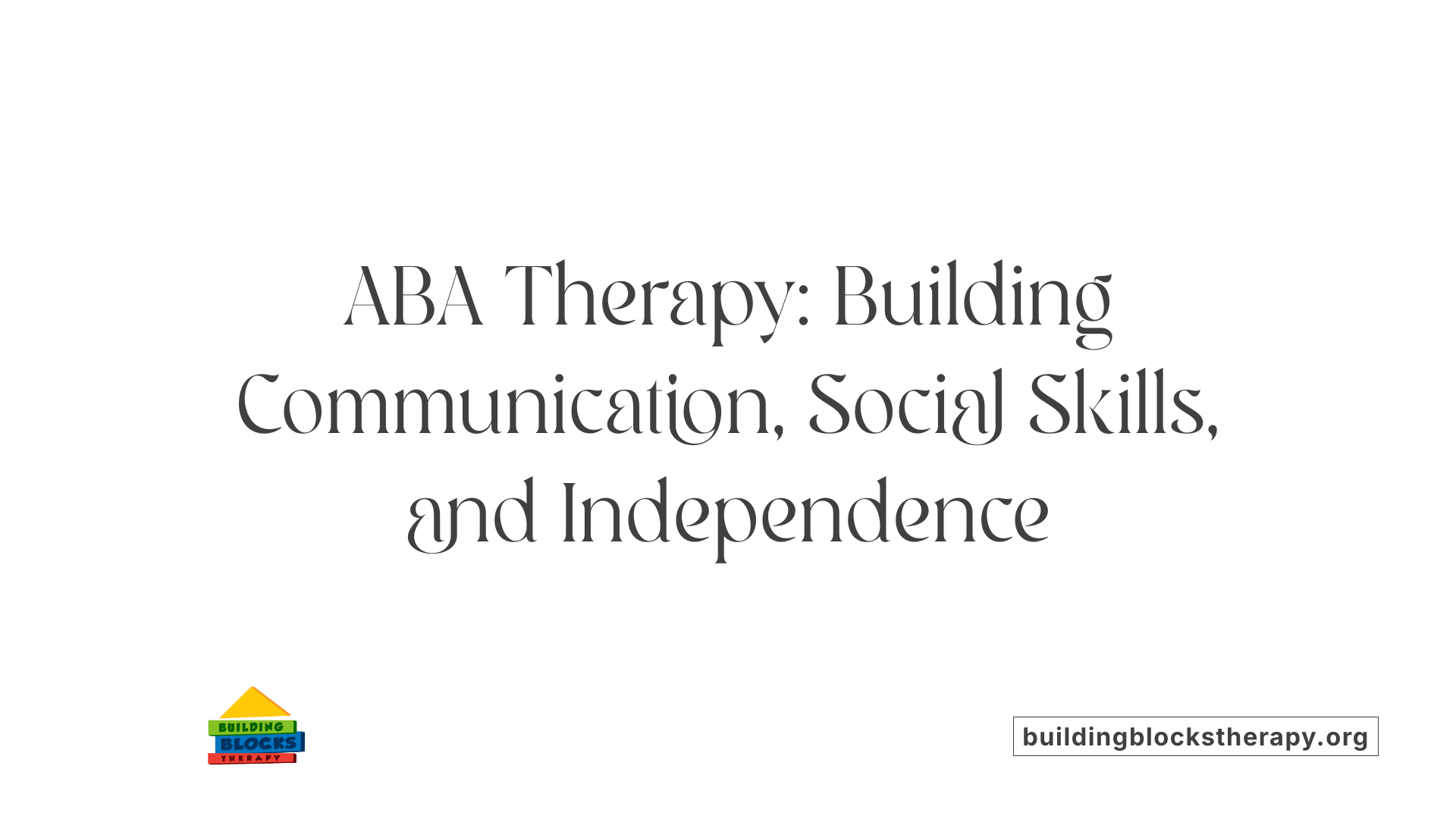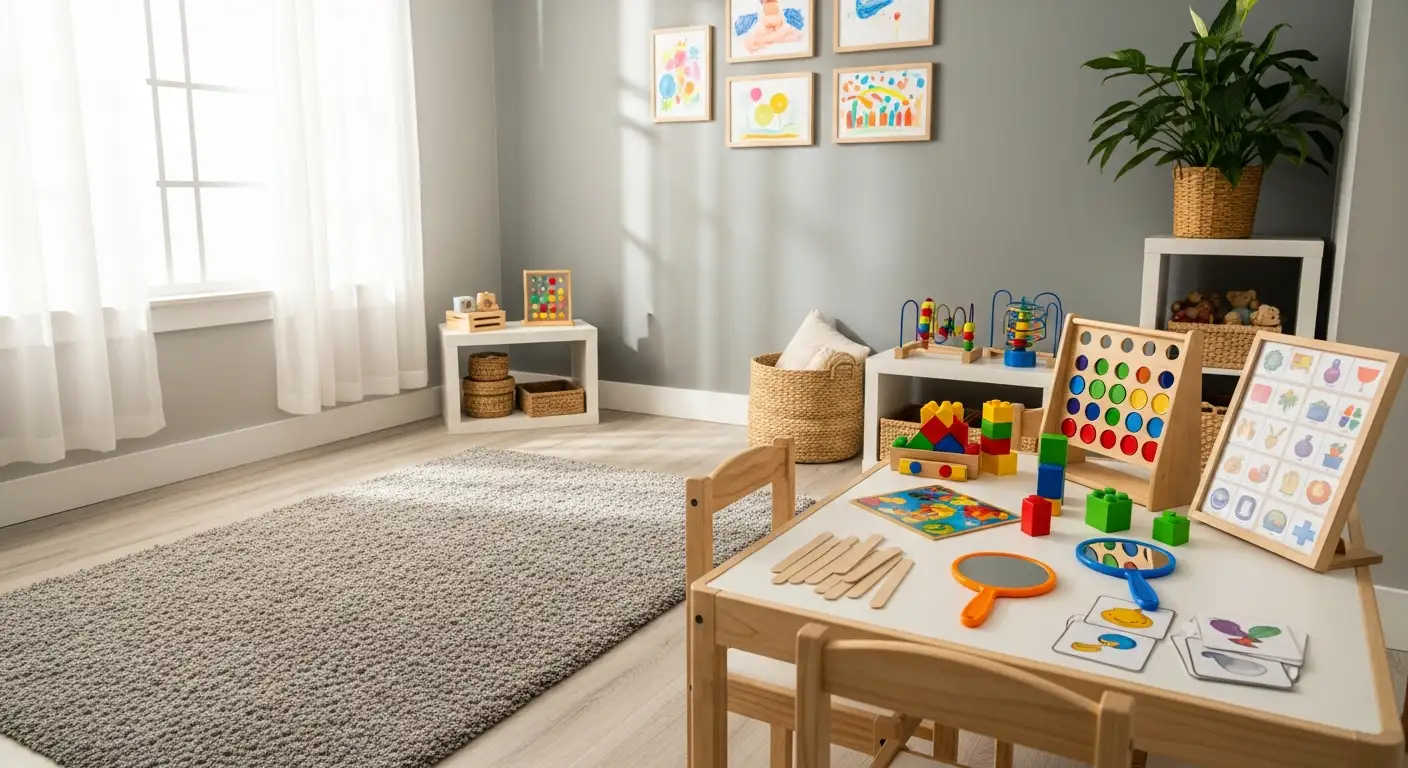Understanding Occupational Therapy for Autism
Occupational therapy (OT) plays a crucial role in supporting children with autism spectrum disorder (ASD) by helping them develop skills needed for everyday life and social interaction. Tailored to each child's unique sensory, cognitive, and motor needs, OT focuses on overcoming challenges that can hinder independence and participation in meaningful activities. This article explores how occupational therapy aids individuals with autism, what therapeutic goals it pursues, and how it integrates with other established treatments like Applied Behavior Analysis (ABA).
What Occupational Therapy Addresses in Autism
Sensory Integration Challenges
Children with autism often face sensory modulation difficulties that impact their ability to engage in daily activities. Occupational therapy uses sensory-integration-based approaches to help manage these challenges. Techniques such as sensory diets—including weighted blankets and noise-canceling headphones—and sensory circuits are incorporated to regulate sensory input, helping children maintain focus and a calm state.
Daily Living Skills Development
A central focus of occupational therapy is building independence through daily living skills. Therapists help children with autism master routines like dressing, bathing, and self-feeding. Play-based learning is utilized to motivate children and make acquiring these skills engaging. Enhanced fine and gross motor skill development supports participation in these activities.
Social Participation Skills
Occupational therapists aid children in understanding social boundaries, personal space, and appropriate social interactions. Structured activities and play promote social communication and peer interaction, helping children develop meaningful relationships and participate more fully in their natural environments.
Emotional Regulation
Emotional regulation is another vital component addressed by occupational therapy. Therapists employ emotional regulation programs and strategies tailored to each child’s needs. These practices foster better management of emotions, reducing behavioral challenges and improving overall wellbeing.
Holistic and Individualized Treatment Approaches
Occupational therapy for autism is holistic, customizing interventions to each child's unique sensory, motor, cognitive, social, and emotional profile. Comprehensive evaluations inform SMART goals that are specific and measurable. Treatment plans often involve family participation and are delivered in natural settings—home, school, and community—to maximize functional gains.
Techniques and Strategies Used by Occupational Therapists

How Do Occupational Therapists Use Play-Based Learning?
Play-based learning is a fundamental strategy in occupational therapy for children with autism. Therapists incorporate engaging, age-appropriate play activities to help children acquire daily living skills such as dressing, feeding, and social interaction. This approach enhances motivation and makes therapy both enjoyable and meaningful.
What Role Do Sensory Diets and Sensory Integration Therapy Play?
Sensory diets are personalized sets of activities designed to help regulate a child's sensory system, promoting calmness or stimulation as needed. For example, activities like dancing or listening to music might be used to energize, while weighted blankets or noise-canceling headphones may calm sensory overload. Sensory integration therapy helps children manage sensory sensitivities by gradually exposing them to different sensory inputs in a controlled way, improving their ability to process and respond to sensory information.
How Is Adaptive Equipment Utilized?
Occupational therapists recommend and train children in the use of adaptive equipment to support independence. These may include tools like special utensils for self-feeding or modified clothing fasteners to improve dressing skills. The goal is to reduce barriers and enhance fine motor abilities, enabling children to perform daily tasks more effectively.
How Does Motor Skills Development Feature in Therapy?
Both fine and gross motor skill development are critical focuses of occupational therapy. Fine motor skills such as holding objects, writing, and manipulating small items are practiced through targeted exercises, while gross motor activities like walking and running are also addressed. Strengthening these skills helps children navigate their environments safely and confidently.
Why Are Structured Schedules and Routines Important?
Creating structured schedules supports smoother transitions and enhances safety awareness. Therapists work with families to establish clear, consistent daily routines using visual aids and cues. This structured approach can reduce anxiety, improve compliance, and aid emotional regulation by providing predictability to daily activities.
These individualized strategies collectively help children with autism access their environments more easily, increase independence, and participate fully in meaningful activities.
The Role of Applied Behavior Analysis (ABA) in Autism Treatment

What is Applied Behavior Analysis (ABA) therapy?
Applied Behavior Analysis (ABA) therapy is a science-based method focused on understanding and changing behaviors. It is widely used to support individuals with autism spectrum disorder (ASD) by increasing helpful skills and reducing challenging behaviors. ABA uses principles like positive reinforcement and structured formats, including the Antecedent-Behavior-Consequence (A-B-C) model, to shape behavior effectively.
ABA techniques like Discrete Trial Training and Pivotal Response Training
Two common ABA techniques are Discrete Trial Training (DTT) and Pivotal Response Training (PRT). DTT involves breaking skills into small, manageable steps and using consistent prompting and rewards to encourage desired responses, ignoring undesired behaviors. PRT is more naturalistic and occurs in everyday settings targeting pivotal developmental areas such as initiating communication. Both methods promote skill acquisition that generalizes across environments.
ABA therapy providers and settings
ABA therapy is delivered by trained professionals, including board-certified behavior analysts (BCBAs) and therapists. It often involves intensive, individualized programs that may span several years. The therapy can be provided at home, school, or community settings, adapting to the individual needs and natural environments of the child, allowing consistent practice and support.
How ABA complements occupational therapy
ABA complements occupational therapy by reinforcing functional skills learned during OT sessions. While OT focuses on developing sensory processing, motor skills, and daily living activities, ABA systematically encourages the use of these skills in real-world situations through behavior modification techniques. Together, they form a comprehensive approach, improving communication, social participation, and independence in children with autism.
How ABA Therapy Supports Individuals with Autism

How does ABA therapy support individuals with autism?
ABA (Applied Behavior Analysis) therapy supports individuals with autism by employing evidence-based strategies grounded in behavioral science to encourage skill development. This therapy is highly individualized, with programs tailored to address each child's specific needs and challenges.
What are the main techniques used in ABA for skill development?
ABA uses reinforcement and prompting to teach desired behaviors. Positive reinforcement encourages repetition of helpful skills, such as communication and social interaction. Techniques like discrete trial training (DTT) break tasks into small steps with clear instructions and rewards, facilitating gradual learning. Pivotal response training (PRT) targets fundamental skills, like initiating communication, in natural settings to promote broad developmental improvements.
How does ABA promote communication, social interaction, and independence?
Through systematic teaching, ABA improves functional communication—both verbal and nonverbal—helping children express needs and engage socially. The therapy also targets social skills, self-care routines, and emotional regulation. These gains foster independence, allowing individuals to participate more actively in daily activities, school, and community environments.
What outcomes does ABA therapy achieve for individuals with autism?
Early and intensive ABA interventions have demonstrated significant developmental progress. Children often show improved language abilities, enhanced social competence, and greater adaptive functioning. These advances contribute to a better quality of life by increasing autonomy and reducing behaviors that interfere with learning and relationships.
Through its data-driven and personalized approach, ABA therapy empowers individuals with autism to build critical life skills, promoting meaningful participation and independence in their communities.
Integrating Occupational Therapy and ABA for Comprehensive Autism Care

How Do Occupational Therapy and ABA Complement Each Other?
Occupational therapy (OT) and Applied Behavior Analysis (ABA) serve complementary roles in supporting children with autism. While OT focuses on enhancing sensory processing, motor skills, daily living activities, and emotional regulation, ABA targets behavioral skill development and modification using evidence-based reinforcement techniques. Together, they create a holistic framework addressing both functional abilities and behavioral challenges.
How Do These Therapies Enhance Daily Functioning and Behavioral Skills?
OT helps children with autism develop independence in self-care routines such as dressing and feeding, improve fine and gross motor skills, and regulate sensory inputs through strategies like sensory diets. At the same time, ABA works by reinforcing positive behaviors and reducing undesired ones via structured methods including Discrete Trial Training and Pivotal Response Training. This dual approach enhances social communication, adaptive skills, and emotional regulation, improving the child’s overall quality of life.
What Is the Role of Families and Tailored Intervention Plans?
Family involvement is vital in both therapies to reinforce progress and generalize skills across environments. Qualified professionals—such as Board Certified Behavior Analysts (BCBAs) for ABA and licensed occupational therapists—develop individualized, SMART (Specific, Measurable, Achievable, Relevant, Time-bound) goals tailored to each child's unique needs. Regular assessments and reviews with family participation ensure therapy remains effective and responsive to developmental changes.
In What Settings Are These Therapies Implemented and How Is Progress Monitored?
Both OT and ABA are delivered across natural settings including home, school, and community to provide relevant, real-life learning opportunities. Therapists monitor progress through ongoing data collection and observations, adjusting treatment plans as necessary. This dynamic model ensures therapies remain practical and aligned with the child's evolving abilities, optimizing developmental outcomes.
Improving Lives Through Occupational Therapy and Behavioral Science
Occupational therapy provides vital support for individuals with autism by addressing sensory sensitivities, motor challenges, social participation, and daily living skills. By employing individualized, play-based, and sensory-focused strategies, occupational therapists help children navigate their environments with greater independence and confidence. When integrated with Applied Behavior Analysis, a rigorously researched behavioral intervention, families can access a comprehensive care approach that promotes meaningful skill development and improves quality of life. Early diagnosis and sustained multidisciplinary intervention remain key to unlocking the full potential of children with autism, enabling them to thrive socially, functionally, and emotionally in their communities.
References
- How Occupational Therapy Can Help Children with Autism
- A Guide to Occupational Therapy for Autism | USAHS
- Occupational Therapy for Autism: What to Expect
- Treatment and Intervention for Autism Spectrum Disorder
- Occupational Therapy for Autism - St. Kate
- Benefits of Occupational Therapy for Autism
- Discover the Benefits of Occupational Therapy for Children ...






